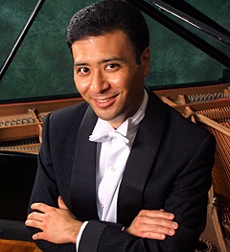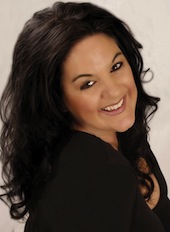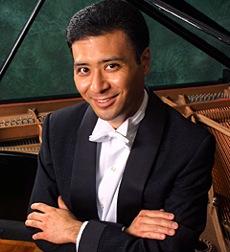As the summer fog rolls in, music festivals blossom throughout the Bay Area. A standout among them has long been the Midsummer Mozart Festival, which started in 1974, and is claimed to be the only music festival in North America dedicated exclusively to Mozart. (No, Lincoln Center’s “Mostly Mozart” doesn’t even come close.)

Rather than hosting many performances at one location, Midsummer Mozart presents two programs performed at four venues: San José, Berkeley, Sonoma, and San Francisco. The first performance of Program I took place Thursday at the California Theater in downtown San José, just a block away from the Plaza de Cesar Chavez where the air was thumping with (painfully) amplified music.
Under the baton of the music director, Maestro George Cleve, the festival opened with a cheerful and dynamic rendition of the Overture to Idomeneo, K. 366. It left me wanting more, as the music is supposed to continue right into the opera; as Maestro Cleve quipped to the audience, “If you want to hear the rest, come to the September performance at Opera San José!”
The program features two soloists, soprano Christina Major, and pianist Jon Nakamatsu. Appropriately, the overture was followed by “Ch’io mi scordi di te,” K. 505, for soprano, piano, and orchestra. Major’s mahogany-toned, luxurious voice was well-suited to Nakamatsu’s delicate and crystalline obligato, and the warmly sonorous orchestra served as a rich background to the tragic libretto.
Nakamatsu then took center stage with the Piano Concerto No. 26 in D, “Coronation,” K. 537. Rather than a full concert grand, a smaller Fazioli F228 (7'6") was used for the performance. The instrument’s distinct and pure colors, and presumably responsive actions, allowed Nakamatsu to dazzle the audience with rapid ornamentations and staccatos that were precise and delicate. His hands barely hovered over the keyboard, yet distinct layers for different voices were clearly presented.

It seemed as if Nakamatsu improvised the cadenza on the stage, as Mozart did. Free and joyous, the cadenza showed off his deft skills and delightful personality at the keyboard. On at least two instances Cleve raised his hands to cue the orchestra, only to lower them as Nakamatsu continued on.
In the verdant, humorous second movement, Nakamatsu projected sparkly dews of shiny notes, often with the most delicate of silken threads. But it took the orchestra a while to settle down to match his whispering, intimate pianissimo.
The joyous Allegretto movement was an exhilarating ride. Although there was a tendency to gallop forward, the energy was maintained throughout, and Nakamatsu’s sparing use of the pedal created a kaleidoscopic juxtaposition of contrasting vibrant colors.
Nakamatsu is clearly one of the greatest pianists of our times. His meticulous technique, immense joy, and intensity radiating from his compact frame (and hands) are undoubtedly superior to those of many big names. His sophisticated, subtle interpretation of a wide variety of repertoire, ranging from Mozart and Schumann to Gershwin, proves his versatility as an artist. I admit that, as a pianist, I am a huge fan, and I think we are fortunate to hear such a great musician hereabouts.
Perfumed Voice
After intermission, Christine Major blessed the audience with “Ruhe sanft,” from Mozart’s unfinished opera Zaide, K. 344. She projected warmth with great control, even in places with octave leaps. She sculpted the lines with subtle colors to breathe life into the music, and her indulgently perfumed voice blossomed luxuriantly.
The concert closed with the Symphony No. 36 in C Major, “Linz.” The double-reed section was particularly strong, with rich solo lines that rose above the strings. The tempo was a little hesitant, and I yearned for a bit more airiness. Still, the voluptuous reading of the symphony was satisfying, and made for a perfect dessert, perhaps the characteristic Apfelstrudel with a cup of rich Einspänner.
Readers are confronted with deciding which of the three remaining performances to attend. For a more traditional concert experience, the First Congregational Church in Berkeley on Friday or the Herbst Theatre on Sunday are clear choices. But I would be tempted to suggest the outdoor concert Saturday on the grounds of the Gundlach Bundschu Winery in Sonoma. It won’t be acoustically ideal, but perhaps with a glass of wine in hand it will be the most appropriate setting for a summer festival concert.

